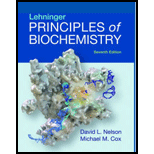
Concept explainers
(a)
To explain: The reason behind the decrease in viscosity of a solution of DNA that occurs after treating it with nuclease.
Introduction:
Viscosity is defined as the thickness of a solution. It is due to the bonding between different molecules present inside the solution. Higher is the bonding, greater will be the viscosity.
(b)
To explain: The reason for the enzyme being an endonuclease or an exonuclease based on the experiment conducted.
Introduction:
Nucleases are of two types: endonuclease and exonuclease. Exonuclease cut the DNA and removes nucleotides one at a time and it cleaves the DNA at the terminals on the other hand; endonuclease cleaves the DNA from the middle of the strand.
(c)
To explain: The reason behind the nuclease cleavage that leaves the phosphate on the 5ʹ or the 3ʹ end of the DNA fragments.
Introduction:
The nuclease is responsible for breaking the phosphodiester bonds and removing the phosphate group. On the other hand, kinase is responsible for the attachment of phosphate group and the process is known as phosphorylation.
(d)
To determine: The consistency of results formed by the cleavage of T7 DNA by nuclease with the enzyme recognizing a specific sequence in DNA as opposed in making the double strand breaks randomly.
Introduction:
The organisms suffer double-strand breaks (DSBs) in their DNA due to the exposure with the ionizing radiations. DSBs can also occur when replication forks find DNA lesions or repair intermediates.
(e)
To explain: The type of model which is responsible for the given type of cleavage.
Introduction:
There are two models for creating fragments Random model resulting in random fragments example of such model is double stranded break. The second model is site specific cleavage; example of such cleavage is cleavage by restriction enzyme.
(f)
To explain: The recognition sequence of the nuclease and the position at which the DNA fragment is cleaved.
Introduction:
Nuclease breaks the phosphodiester bonds present between the nucleotides. Due to the loss of phosphodiester bonds present between the molecules, the DNA is divided into small fragments.
Want to see the full answer?
Check out a sample textbook solution
Chapter 9 Solutions
Lehninger Principles of Biochemistry
 BiochemistryBiochemistryISBN:9781319114671Author:Lubert Stryer, Jeremy M. Berg, John L. Tymoczko, Gregory J. Gatto Jr.Publisher:W. H. Freeman
BiochemistryBiochemistryISBN:9781319114671Author:Lubert Stryer, Jeremy M. Berg, John L. Tymoczko, Gregory J. Gatto Jr.Publisher:W. H. Freeman Lehninger Principles of BiochemistryBiochemistryISBN:9781464126116Author:David L. Nelson, Michael M. CoxPublisher:W. H. Freeman
Lehninger Principles of BiochemistryBiochemistryISBN:9781464126116Author:David L. Nelson, Michael M. CoxPublisher:W. H. Freeman Fundamentals of Biochemistry: Life at the Molecul...BiochemistryISBN:9781118918401Author:Donald Voet, Judith G. Voet, Charlotte W. PrattPublisher:WILEY
Fundamentals of Biochemistry: Life at the Molecul...BiochemistryISBN:9781118918401Author:Donald Voet, Judith G. Voet, Charlotte W. PrattPublisher:WILEY BiochemistryBiochemistryISBN:9781305961135Author:Mary K. Campbell, Shawn O. Farrell, Owen M. McDougalPublisher:Cengage Learning
BiochemistryBiochemistryISBN:9781305961135Author:Mary K. Campbell, Shawn O. Farrell, Owen M. McDougalPublisher:Cengage Learning BiochemistryBiochemistryISBN:9781305577206Author:Reginald H. Garrett, Charles M. GrishamPublisher:Cengage Learning
BiochemistryBiochemistryISBN:9781305577206Author:Reginald H. Garrett, Charles M. GrishamPublisher:Cengage Learning Fundamentals of General, Organic, and Biological ...BiochemistryISBN:9780134015187Author:John E. McMurry, David S. Ballantine, Carl A. Hoeger, Virginia E. PetersonPublisher:PEARSON
Fundamentals of General, Organic, and Biological ...BiochemistryISBN:9780134015187Author:John E. McMurry, David S. Ballantine, Carl A. Hoeger, Virginia E. PetersonPublisher:PEARSON





